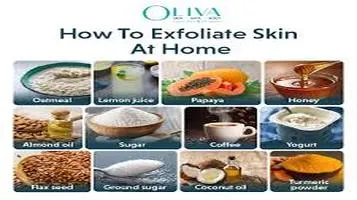Exfoliation Methods and Benefits: A Comprehensive Review
Exfoliation is a skincare technique that involves removing dead skin cells from the skin's surface, enhancing its texture and appearance. There are two primary methods: physical and chemical exfoliation. Physical exfoliation uses scrubs or brushes to manually slough off dead skin, promoting immediate smoothness. Chemical exfoliation employs acids like alpha-hydroxy acids (AHAs) or beta-hydroxy acids (BHAs) to dissolve the bonds between dead cells, offering a more even and deeper exfoliation. The benefits of regular exfoliation include improved skin texture, enhanced absorption of skincare products, unclogged pores, and a brighter complexion. It can also help reduce the appearance of fine lines and acne scars. However, it's essential to choose the right method for your skin type to avoid irritation.

Exfoliation—an essential component of skincare—revolves around the removal of dead skin cells from the surface of the skin. This process is paramount in maintaining a healthy, vibrant complexion. Various methods and techniques exist, each catering to different skin types and concerns. This review delves into the diverse exfoliation methods available while elucidating their distinct benefits.
Mechanical Exfoliation
Mechanical exfoliation involves the physical removal of dead skin cells using abrasive materials. Common tools and products include scrubs, brushes, and sponges.
1. Scrubs: These are perhaps the most widely recognized form of mechanical exfoliation. They typically contain small particles such as sugar, salt, or microbeads that physically slough off dead skin. Scrubs are ideal for individuals with normal to oily skin. However, they can be too harsh for those with sensitive or acne-prone skin, potentially causing microtears and irritation.
2. Brushes and Sponges: Facial brushes (manual or electric) and konjac sponges provide another avenue for mechanical exfoliation. These tools offer a deeper cleanse compared to scrubs and can enhance blood circulation, promoting a natural glow. Despite their benefits, overuse can lead to skin sensitivity and should be limited to a few times a week.
Chemical Exfoliation
Chemical exfoliation uses acids or enzymes to dissolve dead skin cells. This method is often gentler on the skin compared to mechanical exfoliation and can be highly effective for various skin concerns.
1. Alpha Hydroxy Acids (AHAs): AHAs, such as glycolic acid and lactic acid, are water-soluble acids derived from fruits and milk. They work by breaking down the bonds between dead skin cells, facilitating their removal. AHAs are particularly beneficial for dry or sun-damaged skin, helping to even out skin tone and improve texture.
2. Beta Hydroxy Acids (BHAs): Salicylic acid is the most common BHA. It is oil-soluble, allowing it to penetrate deeper into the pores, making it excellent for oily and acne-prone skin. BHAs help to unclog pores, reduce blackheads, and control sebum production.
3. Enzymes: Enzyme-based exfoliants, derived from fruits like papaya and pineapple, offer a gentler alternative to acids. They break down the keratin protein in dead skin cells, making them suitable for sensitive skin types.
Benefits of Exfoliation
1. Improved Skin Texture: Regular exfoliation smooths the skin’s surface, creating a more even texture. This is particularly beneficial for those with rough, bumpy skin or conditions like keratosis pilaris.
2. Enhanced Absorption of Skincare Products: By removing the barrier of dead skin cells, exfoliation allows for better penetration of skincare products, making ingredients like serums and moisturizers more effective.
3. Unclogged Pores: Exfoliation helps to clear out dirt, oil, and dead skin cells from pores, preventing breakouts and reducing the appearance of blackheads and whiteheads.
4. Even Skin Tone: Regular exfoliation can reduce hyperpigmentation and dark spots, leading to a more uniform skin tone. This is especially beneficial for those dealing with post-inflammatory hyperpigmentation or sun spots.
5. Increased Cell Turnover: Exfoliation stimulates cell turnover, promoting the production of new, healthy skin cells. This process can diminish the appearance of fine lines and wrinkles, contributing to a more youthful complexion.
6. Radiant Skin: Removing the dull layer of dead skin cells reveals the fresh, glowing skin underneath. Exfoliation can give the skin a natural, healthy radiance.
Potential Risks and Precautions
While the benefits of exfoliation are numerous, it is essential to approach the practice with caution to avoid adverse effects.
1. Over-Exfoliation: Excessive exfoliation can strip the skin of its natural oils, leading to dryness, irritation, and increased sensitivity. It is crucial to follow a balanced exfoliation routine, tailored to individual skin types and needs.
2. Sun Sensitivity: Both mechanical and chemical exfoliation can increase the skin’s sensitivity to the sun. Incorporating a broad-spectrum sunscreen into the daily skincare regimen is vital to protect the newly exposed skin layers.
3. Skin Type Consideration: Choosing the right exfoliation method is paramount. Individuals with sensitive or acne-prone skin should opt for gentler methods like enzyme exfoliants or low-concentration AHAs and BHAs.
Conclusion
Exfoliation, when done correctly, is a powerful tool in maintaining vibrant and healthy skin. Whether through mechanical means like scrubs and brushes or chemical avenues such as AHAs, BHAs, and enzymes, the benefits are manifold. Improved texture, unclogged pores, enhanced product absorption, and a radiant complexion are just a few advantages. However, it is essential to tailor the exfoliation routine to individual skin types and concerns, ensuring a balanced approach to avoid potential risks. With mindful practice, exfoliation can be a transformative step in any skincare regimen.






